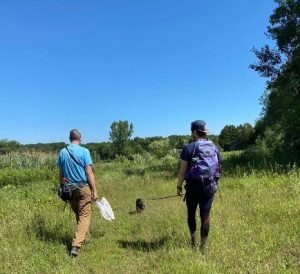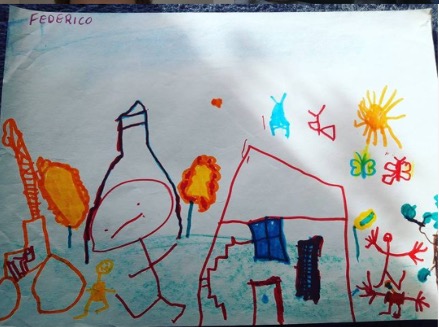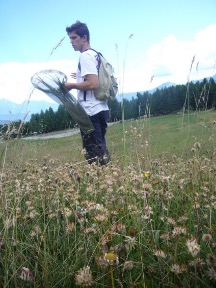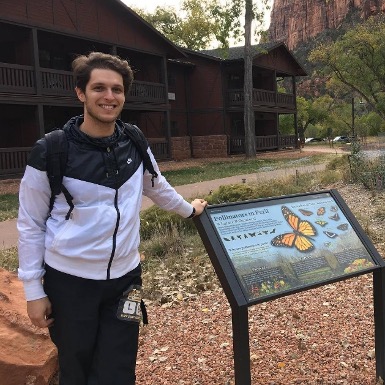Postdoctoral Fellow Joins the eButterfly Team

We are excited to have Dr. Federico Riva join us for a short fellowship. Over the next few months he will be working to map the distribution of North American butterflies, assessing trends in their populations, and helping to inform effective monitoring practices. We asked him to share a bit about his background and his work with butterflies. Welcome to the eButterfly team Dr. Riva!
My name is Federico Riva, I am an Italian conservation biologist and ecologist. I recently joined the Montreal Insectarium to study in collaboration with Carleton University the effects of climate change on the butterflies of North America through a Mitacs Accelerate Fellowship. I am incredibly excited about this opportunity. In this blog I want to tell you about my previous experiences, and explain why my background will allow me to capitalize on the incredible resources that the eButterfly dataset can be for conservation science.
I recently found out that I was obsessed with butterflies at a very young age. Nevertheless, as a teenager I was admittedly fonder of basketball and video games. In an unexpected turn of events, basketballs were eventually replaced by entomological nets as I entered my 20s and began my academic career. It has now been more than 10 years since I began studying the biology, ecology and conservation of butterflies. At the University of Turin, Italy, I graduated with a B.Sc. and M.Sc. with two theses on butterfly conservation in the context of ski slopes and butterfly-ant interactions (“myrmecophily”).


I followed up on these projects with an internship at Zion National Park, in Utah, where I worked on some populations of the Western monarch butterfly and designed the Park “pollinators gardens”. I followed up on these projects with an internship at Zion National Park, in Utah, where I worked on some populations of the Western monarch butterfly and designed the Park “pollinators gardens”.

Finally, I came to Canada in 2015 to work on a Ph.D. at the University of Alberta with Scott Nielsen, with the goal of assessing how human disturbance and wildfire affect boreal butterflies in the oil sands region. I spent countless hours in the Alberta boreal forest and counted thousands of butterflies while studying rare species, biodiversity, behavior, and the relationship of these beautiful critters with larval host plants in pristine and disturbed forests.
My connection with eButterfly has been serendipitous. I first heard about this community science program from John Acorn, one of my doctoral advisors, and Felix Sperling, who was also involved in my projects during my period at the University of Alberta. They were both enthusiastic! I then met Maxim Larrivée at a symposium that Peter Soroye and I organized in 2019 to celebrate butterflies in ecology and evolution. Last, I began a postdoc with Lenore Fahrig in Ottawa. Being close to Montreal allowed me to reconnect with Maxim and spend some time catching butterflies with him last summer. In the fall, when the opportunity presented itself, applying for a Mitacs fellowship in partnership between Carleton and the Insectarium was a no-brainer.
Perhaps the greatest lesson that I learned in the past 10 years is that nature is incredibly complex. Therefore, modern conservation science needs a strong interdisciplinary background. Today I consider myself a conservation biologist more than an entomologist, and my areas of expertise include biodiversity science, ecological modeling, landscape ecology, and conservation biogeography. Of course, I have a strong theoretical understanding of the biology and ecology of butterflies, and I continue to work with the goal of increasing our understanding of these insects and of protecting them. For more information on my past research and published work, please see https://www.riva-ecology.com/. I will put these tools at the service of eButterfly and in the next few months I will work to achieve three main objectives: (i) map the distribution of North American butterflies, (ii) assess trends in their populations, and (iii) inform effective monitoring practices.
Moving forward, I hope to continue working with eButterfly in the coming years, even when I will move on to my next adventure. I truly enjoy the spirit of this program, and I will do my best to represent its values and commitment in the upcoming months.